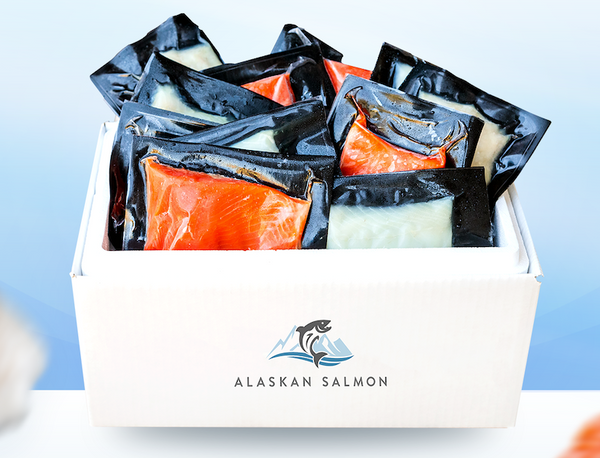
Wild Alaskan Halibut
- VIP access to exclusive seafood
- Guaranteed delivery during sell-outs
- Gift or swap items
- Pause, update frequency or cancel anytime
Product Description
Indulge in the mildly sweet flavor and firm, meaty texture of Wild Alaskan Halibut, sustainably harvested from the icy, nutrient-rich waters of Alaska by Your Personal Fisherman, Kyle Lee. This premium wild halibut is a versatile culinary favorite, perfect for grilling, baking, pan-searing, or adding to your favorite seafood recipes.
Packed with lean protein, omega-3 fatty acids, and essential micronutrients. Each Halibut fish not only delights your taste buds but also supports brain function, heart health, and overall well-being.
✔ Hand-cut & flash-frozen for peak freshness: Each halibut fillet is carefully hand-cut into 6 oz portions, then individually vacuum-sealed and flash-frozen immediately after harvest to preserve its fresh halibut quality, texture, and flavor.
✔ Expertly packed & delivered to your doorstep: Your order is securely packed with plenty of dry ice in a perfectly sized, insulated box, ensuring your halibut remains frozen and fresh upon arrival.
✔ Order today and elevate your seafood experience with the exquisite taste of Premium Alaskan Halibut!
Frequently Asked Questions
What does “wild-caught” halibut mean?
Wild-caught halibut refers to halibut fish harvested directly from their natural habitats rather than being raised in controlled environments like fish farms. Our halibut is 100% wild-caught giving a more natural flavor and texture than farm-raised halibut.
What does “sushi-grade” halibut mean?
“Sushi-grade" halibut is a term given to a halibut fish that shows it is safe to prepare and eat raw. Our halibut fillets are frozen to a specific temperature to kill parasites, making it safe to consume raw.
What does “sustainable” halibut mean?
Sustainable halibut refers to practices in both wild fisheries and aquaculture that consider the long-term health of halibut populations and minimize environmental impact. The Alaska Department of Fish and Game oversees the halibut fishing process, using science-based approaches to prevent overfishing and maintain balanced populations.
What are the shipping costs?
For a limited time, we are offering free shipping for all orders.
How long does shipping take?
All orders are shipped Monday and Wednesday (excluding weekends and holidays). After receiving your order confirmation email, you will receive another notification when your order has shipped. All orders will be shipped with dry ice using FedEx and UPS' Overnight and 2-day shipping services.
Don't Just Take Our Word
Our customers love our seafood.

"Makes it easy for us to eat healthy."

"The skin crisps up perfectly."

"Air frying my fish has been an absolute gamechanger."











